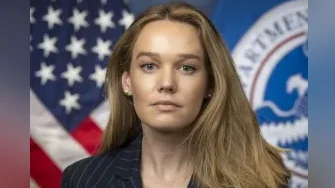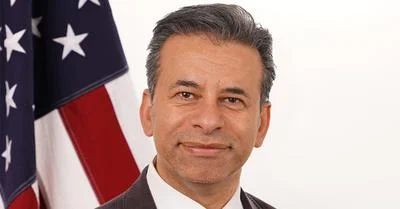Today in Tuscaloosa, Alabama, U.S. Secretary of Commerce Penny Pritzker participated in the grand opening of the National Water Center, a new facility located at the University of Alabama and the first center in the nation dedicated to water forecast operations and research.
As the country becomes more vulnerable to water-related events like drought and flooding, the National Water Center will serve as a hub of integrated water prediction and forecasting for the federal government. Scientists and forecasters from the National Oceanic and Atmospheric Administration (NOAA), the U.S. Geological Survey, and the Federal Emergency Management Agency (FEMA) at the 65,000 square-foot building will collaborate to provide the nation with enhanced water-related products and services to support water management decisions across the country. Bringing experts together in this new center provides an unprecedented opportunity to improve federal coordination in the water sector to address 21st century water resource challenges. “The new National Water Center will help us create a safer, more secure, weather-ready nation,” said Secretary Pritzker. “Measuring, managing, and planning for water is complex, and the need for a more integrated approach has never been greater. Through this Center, we will work with our partners in the federal government, community leaders nationwide, and the University of Alabama to deliver solutions to one of our most pressing environmental challenges.” As part of the Department’s “Open for Business Agenda,” Commerce has made it a priority to improve the government’s data collection, analysis and dissemination to best equip communities to prepare for extreme weather events, and handle their aftermath.
"As America’s environmental intelligence agency, NOAA is committed to transforming our observations into actionable information that enable people to make smart decisions. By bringing academia, managers, industry, forecasters and scientists together, we’ll be able to better understand real-world needs and support the growing demand for water related information," said Kathryn Sullivan, Ph.D., NOAA administrator.
“The opening of the National Water Center marks a significant step forward in water resource management and hazard mitigation for the state of Alabama and our nation,” said Sen. Richard Shelby. “This state-of-the-art facility will be the first ever clearing house for research and operational forecasting of all water-related matters. I am proud to see this vision come to fruition, and I look forward to seeing what great things come out of the National Water Center.” Along with NOAA Administrator Dr. Kathryn Sullivan and Senator Richard Shelby, who was instrumental to opening the Center, Secretary Pritzker delivered remarks at today’s ribbon-cutting ceremony. She highlighted the role of the Department of Commerce in understanding and predicting extreme weather, as well as providing communities and businesses with the information, products and services they need to mitigate the economic impacts of these events.
Remarks as Prepared for Delivery Thank you, Dr. Sullivan, for your introduction and for your stellar service to the Commerce Department and to our nation as Administrator of NOAA. I also want to thank Congresswoman Sewell for your leadership on behalf of the community of Tuscaloosa and this state every day in the House of Representatives. I would like to recognize some of our key partners in the development and operations of the National Water Center: FEMA; the U.S. Geological Survey; the Army Corps of Engineers; and our hosts, the University of Alabama. Roll Tide! We all owe a very special thank you to Senator Shelby. His persistence and personal commitment have made the National Water Center a reality. I have had the pleasure of knowing Senator Shelby for more than two decades, and our ties span multiple generations in my family.
Now, as Secretary of Commerce, I am proud to work with the Senator in his capacity as the Chair of the Appropriations Subcommittee on Commerce. Together, even in a tough budget environment, we are working side-by-side to strengthen our Department and support NOAA’s vital work. From the start, Senator Shelby understood the need to house our water policy and prediction capabilities in a single center. His leadership and his vision have made it possible to bring top experts, researchers, and scientists from across the federal government together under one roof. Senator Shelby, we would not be here today without you.
This new National Water Center will support efforts to anticipate extreme water-related events and to address competing demands for increasingly limited water availability. Measuring, managing, and planning for water is complex, and the need for this hub of innovation and data – the need for a more integrated approach – has never been greater. The risks and challenges of having too much water – in other words, flooding – or too little water – in other words, drought – have a direct impact on our businesses and our economy; on our industries such as agriculture, manufacturing, transportation, and energy; on our communities, which are vulnerable to extreme weather; on our natural resources; and on the lives and safety of our families.
Just this past weekend, the entire country saw the devastating impact of extreme water events in Louisiana, Texas, Oklahoma, and elsewhere. Storms and tornadoes have threatened lives and property; led to dangerous flash floods; and forced more than 2,000 people to flee their homes. We have heard reports of one river in Texas that rose 26 feet in just an hour. And in Oklahoma, a brave firefighter lost his life while trying to rescue 10 others in high water. Today, our thoughts and prayers remain with everyone caught in the path of these horrific storms.
You have seen our nation’s water-related threats and dangers firsthand here in Alabama. Just last year, torrential rains left parts of this state under record amounts of water. Houses were flooded; boats and cars were floating down the Fish River; and roads were washed out. According to NOAA, the storm – which included flooding and tornadoes – cost more than $1 billion in damages.
On the other side of the water equation – and on the other side of the country – California is currently facing its worst drought on record. The drought is costing the state’s economy billions of dollars, putting tens of thousands of people out of work, and threatening the future of some of California’s key exports, such as almonds. Its effects are also being felt by consumers across the nation who are paying increased prices for California crops.
These examples make it clear that time is of the essence for our government to bring together disparate sources of information needed to tackle the broader implications of water availability. While NOAA will lead the Center’s efforts, we are looking forward to increased engagement with partners like FEMA, the U.S. Geological Survey, and the Army Corps of Engineers. The National Water Center must be and will be a collaborative effort – because we have important work to do together.
For our communities, the center’s work will support efforts to anticipate and respond to floods, coastal inundation, drought, water quality changes, and other risks to our water supply. For the Gulf region – for the first time – the center will unite coastal and inland flooding models, so that the “total water impact” on coastal communities can be predicted in advance of approaching hurricanes and tropical storms.
For our entire country, researchers like Barbara and Sadiq Khan are already creating tools that are essential for communicating water risk. For example, they are using data across the federal government to create digital maps that show the potential real world impacts of water risks – like storm surges – on communities, roads and bridges. But it is not just Barbara and Sadiq. The efforts of the entire team of this center are critical to ensuring that American communities are better-prepared for advancing storms and can better plan for either high flooding or long droughts.
The new National Water Center will help us create a safer, more secure, weather-ready nation. We welcome the opportunity to work with all of our federal government partners, with community leaders nationwide, and with the University of Alabama to deliver solutions to one of our most pressing environmental challenges.
Thank you once again, Senator Shelby, for your hard work and persistence in Congress that has brought this facility to life here in Tuscaloosa.
Source: U.S. Department of Commerce








